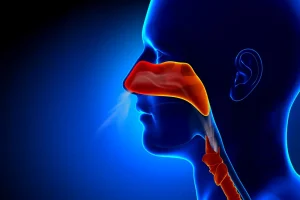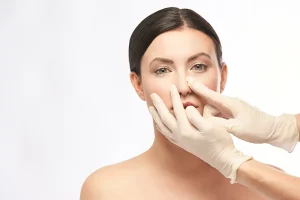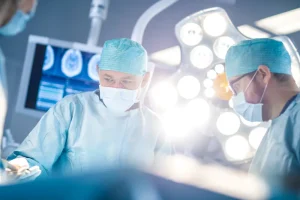ENT surgery (Otorhinolaryngology)
Rediscover breathing comfort and airway health!
Home » ENT Surgery (Otorhinolaryngology)
Conditions Treated
- Chronic Rhinosinusitis
- Sept Deviation
- Nasal Polyps
- Nasal Congestion
- Nasal Obstruction
- Benign and Malignant Nodules and Tumors
- Obstructive Sleep Apnea
Medical Procedures
ENT Surgery
- Sleep Apnea Treatment
- Treatment of Nasal Polyps
- Treatment of Nasal Obstruction
- Tonsillectomy
Rhinosinus Surgery
- Radiofrequency Turbinoplasty
- Treatment of Nasal Polyps
- Functional and Aesthetic Reconstruction
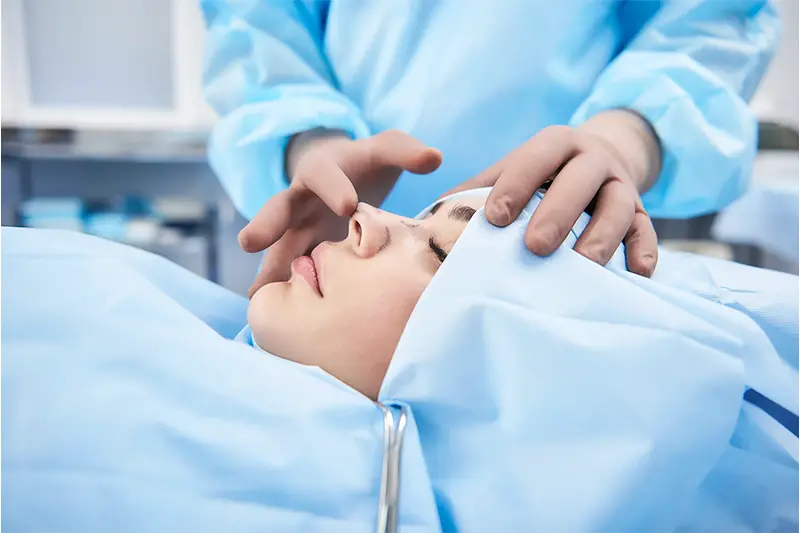
ENT and Rhinosinusitis surgery is essential for upper airway health and the comfort of your life. At VenArt Clinic, we offer personalized solutions for treating nose and throat conditions using minimally invasive techniques and state-of-the-art equipment.
What is ENT Surgery
ENT surgery focuses on the treatment of conditions of the nose and throat, with both functionality and aesthetics of these important areas as its goal. At VenArt Clinic, we are dedicated to your health, offering modern and personalized solutions for each patient, contributing to a healthier and more comfortable life.
Conditions Treated
- Obstructive Sleep Apnea;
- Septal Deviation;
- Nasal Polyps;
- Nasal Obstruction;
- Benign and Malignant Nodules and Tumors.
Medical Procedures
- Rhinoplasty: Aesthetic and functional surgery to reshape the nose;
- Septoplasty: Correction of deviated septum for free breathing;
- Rhinoseptoplasty: Combined procedure to correct deviated septum and aesthetic reshaping of the nose;
- Sleep Apnea Treatment: Minimally invasive procedures to remove blockages that affect sleep;
- Treatment of Nasal Polyps: Endoscopic removal of polyps for optimal breathing;
- Treatment of Nasal Obstruction: Surgical solutions for airway clearance;
- Tonsillectomy: Removal of inflamed or infected tonsils.
Advantages
- Minimally invasive procedures;
- Rapid recovery and short hospitalization period;
- Advanced technologies that ensure maximum precision.
What is Rhinosinus Surgery
Rhino Sinonasal surgery focuses on treating complex problems of the nasal passages and sinuses, combining functionality with aesthetics.
Conditions Treated
- Chronic Rhinosinusitis;
- Septal Deviation;
- Nasal polyps;
- Nasal Congestion;
- Nasal Obstruction.
Medical Procedures
- Rhinoseptoplasty: Correction of deviated septum and reshaping of the nose;
- Radiofrequency turbinoplasty: Reduction of nasal turbinate congestion and inflammation;
- Nasal Polyp Treatment: Removal by minimally invasive techniques;
- Functional and Aesthetic Reconstruction: Customized procedures to restore both functionality and aesthetics.
Benefits
- Significant reduction in nasal congestion;
- Minimized risk of postoperative complications;
- Aesthetic and functional results;
- Rapid improvement in quality of life.
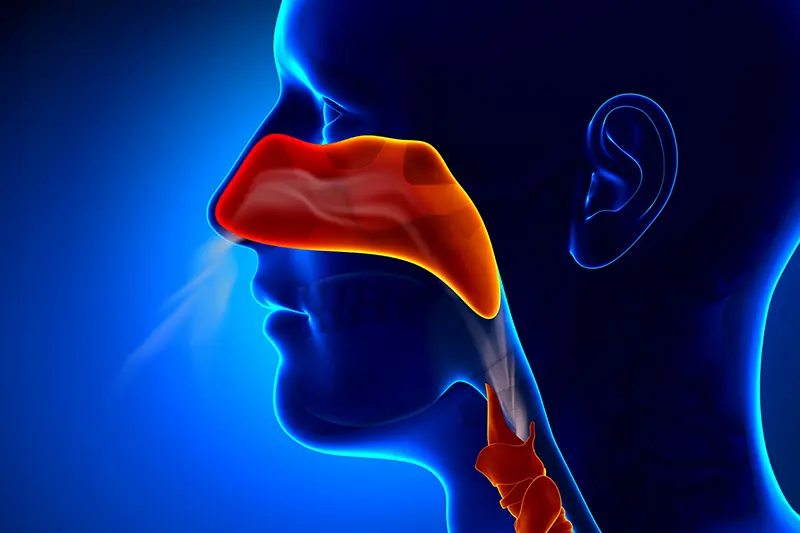
Causes of Rhinosinusal Disease
Rhinosinusitis diseases have a variety of causes, and understanding these is fundamental to adopting an effective treatment plan. Here is a brief overview of the main factors that contribute to the onset and progression of this condition:
- Recurrent infections: Repeated respiratory infections can trigger and maintain chronic inflammation of the nasal mucosa and sinuses;
- Allergies: Allergic reactions can worsen the symptoms of rhino-sinonasal disease, contributing to inflammation and congestion;
- Sept Sept Deviation: Septal deviation, a deviation of the nasal wall, can obstruct the nasal passages and contribute to stagnation of secretions;
- Nasal Polyps: Abnormal growth of tissue inside the sinuses, known as nasal polyps, can block drainage pathways and cause persistent symptoms;
- Anatomical factors: Certain anatomical features, such as an enlarged nasal concha, can contribute to shortness of breath and congestive;
- Dental infections: Infections in the dental area can extend upper airway inflammation, contributing to chronic rhinosinusitis.
Benefits of Functional and Aesthetic Rhinoseptoplasty
Functional and Aesthetic Rhinoseptoplasty is an innovative surgical intervention, successfully performed for over 11 years in the VenArt clinic by the team of experts Dr. Iuliu V. Cătană and Dr. Claudiu I. Filip. With hundreds of surgeries in its portfolio, this procedure combines functional correction with aesthetic improvement, offering remarkable benefits to patients:
- Improved Breathing: Correction of deviated septum and other anatomic problems allows for easier and freer breathing;
- Reduced Nasal Congestion: Removal of obstructions helps decrease nasal congestion by facilitating airflow;
- Restoring Sinus Function: Opening the sinus drainage channel prevents secretion buildup and reduces the risk of recurrent infections;
- Symptom Improvement: Patients report a significant decrease in symptoms such as facial pain, headache and fatigue;
- Improved Aesthetic Appearance: Nose reshaping provides a harmonious aesthetic balance tailored to facial features, contributing to self-confidence.
- Improved Quality of Life: By correcting both functional and aesthetic aspects, rhinoplasty contributes to a significant improvement in the patient’s overall quality of life.
Rhinoseptoplasty is more than a functional correction – it’s an integrated solution that restores health and natural beauty to our patients.
How do we choose the right treatment?
Choosing the right treatment for chronic rhinosinusitis consists of a personalized approach and close collaboration with our rhinosinusitis specialists. Here are the key steps to choosing the right treatment:
- Specialized Medical Consultation: Scheduling a consultation with specialists such as Dr. Iuliu Cătană or Dr. Claudiu Filip is the essential first step. Detailed evaluation will determine the specific causes and guide the choice of treatment;
- Accurate Diagnosis: Laboratory tests and medical imaging help in an accurate diagnosis. Knowing the exact causes is crucial to establish an efficient treatment;
- Personalization of Treatment: Each patient has individual needs. A personalized treatment plan may include drug therapy, minimally invasive procedures or surgery, depending on the specifics of the case;
- Open Communication: Open discussion and collaboration with the medical team are essential to understanding treatment options and making an informed decision;
- Continuous Monitoring: Treatment may involve multiple stages and require continuous monitoring. Adjustments can be made based on the patient’s individual response;
- Conservative Options: Before considering surgery, conservative options such as drug therapy and corticosteroid therapy may be evaluated for symptom control.
Choosing the right treatment depends on careful evaluation and working closely with the medical team. Consult specialists to determine the most effective treatment plan for your individual needs.
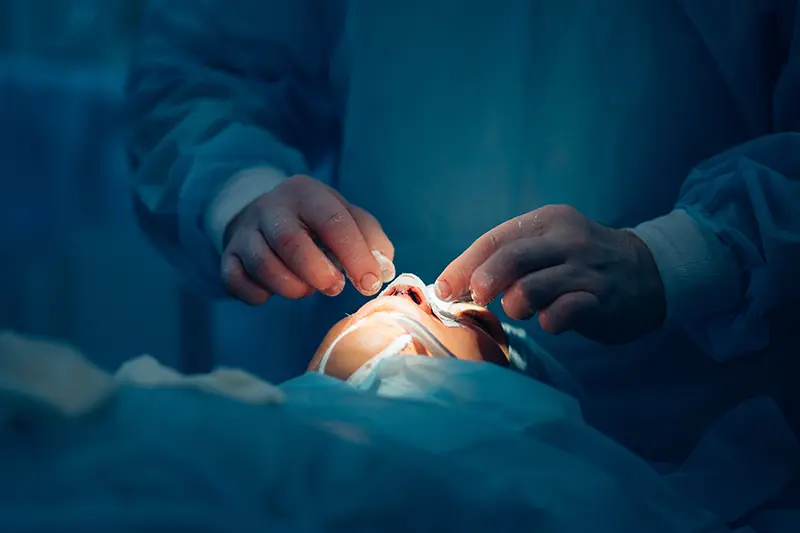
Expectations during and after surgery
Surgical procedures for chronic rhinosinusitis involve certain steps during and after surgery. Here’s what to expect:
- During surgery: Anesthesia and Monitoring: The patient is anesthetized to ensure comfort and safety. The medical team constantly monitors the patient’s condition during the procedure.
- Advanced techniques: Surgeons such as Dr. Iuliu Cătană and Dr. Claudiu Filip use advanced techniques, such as endoscopy, to ensure precision and optimal results.
- After surgery: Recovery Period: Recovery can vary, but is often quick for minimally invasive procedures. The medical team provides clear instructions for the postoperative period.
- Medical Monitoring: The patient is monitored by the medical team to ensure adequate progress and to manage possible complications.
- Symptom relief: Significant improvements can be noticeable, including easier breathing and reduced symptoms.
- Minimal marks: Many procedures have minimal visible marks, and postoperative pain is carefully managed for patient comfort.
- Home Care Instructions: The medical team provides specific home care instructions and schedules follow-up appointments to ensure optimal progress.
Understanding the process and working closely with the medical team are key to an effective recovery after rhinosinusitis surgery.
Safe Procedures with Minimal Risks
ENT and Rhinosinus surgery carries low risks thanks to the modern techniques used at VenArt. Possible risks include:
- Postoperative infections;
- Minor bleeding;
- Temporary discomfort;
- Through careful monitoring and postoperative care, we ensure that every patient recovers quickly and without complications.
Our Team of Specialists
Rhinosinusal surgery, guided by VenArt’s multidisciplinary team, Dr. Iuliu Cătană and Dr. Claudiu I. Filip, represents a significant advance in the management of rhinosinusitis rhinosinusitis cornice.
Our team is committed to providing the highest quality care, and their experience and expertise contribute to exceptional outcomes for our patients.
- Iuliu Cătană: With a rich career in ENT surgery and a special focus on sinus surgery, Dr. Iuliu Cătană offers personalized solutions and advanced treatments.
- Claudiu Filip: With an extensive experience in Plastic and Reconstructive Surgery and a special focus on rhinoplasty and rhinosynoplasty, Dr. Claudiu Filip brings innovative approaches and outstanding results.
Our Medical Team
Frequently Asked Questions
What is ENT?
ENT is short for Otorhinolaryngology, the medical specialty that deals with the diagnosis and treatment of disorders of the ear, nose and throat, as well as related structures (sinuses, larynx).
When should I see an ENT doctor?
You should consult an ENT doctor if you have symptoms such as:
- Ear pain or hearing loss;
- Persistent nasal congestion or recurrent sinus infections;
- Sore throat or prolonged hoarseness;
- Heavy snoring or sleep apnea;
- Dizziness or balance problems.
What conditions does an ENT surgeon treat?
An ENT surgeon treats conditions such as:
- Deviated nasal septum;
- Nasal polyps;
- Chronic tonsillitis;
- Chronic sinusitis;
- Chronic otitis media;
- Head and neck tumors;
- Hearing problems (otosclerosis).
What is a deviated septum and when is surgery necessary?
Septal deviation is a deformity of the nasal septum that can obstruct breathing. Surgery (septoplasty) is needed if symptoms include:
- Nasal breathing difficulties;
- Frequent sinus infections;
- Snoring or sleep apnea.
What is chronic sinusitis and how is it treated?
Chronic tonsillitis is a persistent inflammation of the tonsils caused by repeated infections. Treatment may include:
- Antibiotics for acute infections;
- tonsillectomy (removal of tonsils) if infections are frequent and severe.
What is chronic tonsillitis and how is it treated?
Chronic sinusitis is long-term inflammation of the sinuses that can cause:
- Nasal congestion;
- Facial pain;
- Nasal discharge Treatment may include medication (decongestants, nasal corticosteroids) or surgery (endoscopic sinusectomy).
What is snoring and how is it treated?
Snoring is the noise produced by the vibration of tissues in the throat during sleep. It can be caused by:
- Septal deviation;
- Enlarged tonsils;
- Obstructive sleep apnea Treatment may include;
- Lifestyle changes (losing weight, avoiding alcohol);
- Sleep devices;
- Surgery to remove obstructions (uvulopalatopharyngoplasty).
What is obstructive sleep apnea?
Obstructive sleep apnea is a condition in which breathing stops temporarily during sleep due to airway obstruction. Symptoms include:
- Heavy snoring;
- Excessive tiredness during the day;
- Morning headaches Treatment may include use of a CPAP device or surgery.
What is chronic otitis media?
Chronic otitis media is a persistent infection or inflammation of the middle ear that can lead to:
- Hearing loss;
- Purulent discharge Treatment includes antibiotics, drainage or surgery (tympanoplasty).
What are the risks of ENT surgery?
Risks may include:
- Infections;
- Bleeding;
- Temporary or permanent loss of sense of smell or hearing;
- Scarring Talk with your doctor to understand the specific risks of the procedure.
When is nasal polyp surgery necessary?
Nasal polyps are benign growths inside the nasal cavity that can obstruct breathing. Surgery is needed if:
- Drug treatment (corticosteroid sprays) doesn’t work;
- Polyps cause recurrent sinus infections.
What should I do before ENT surgery?
Your doctor will recommend:
- Stop certain medications (e.g., aspirin);
- Refrain from food and drink before surgery;
- Have the necessary tests (e.g. blood tests, X-rays).

